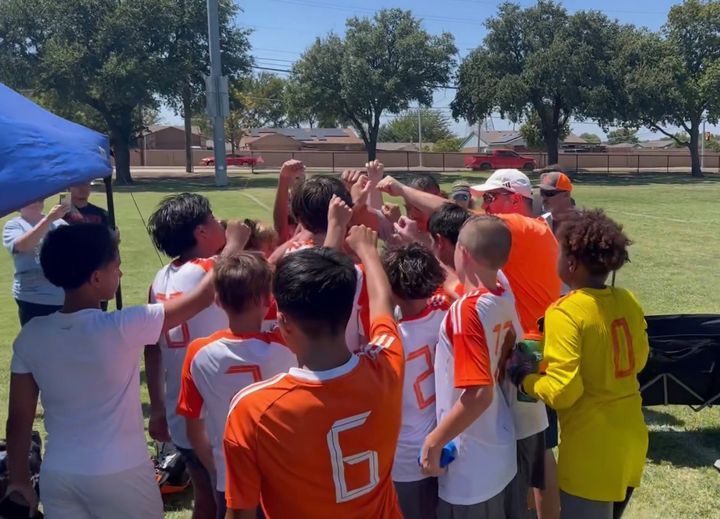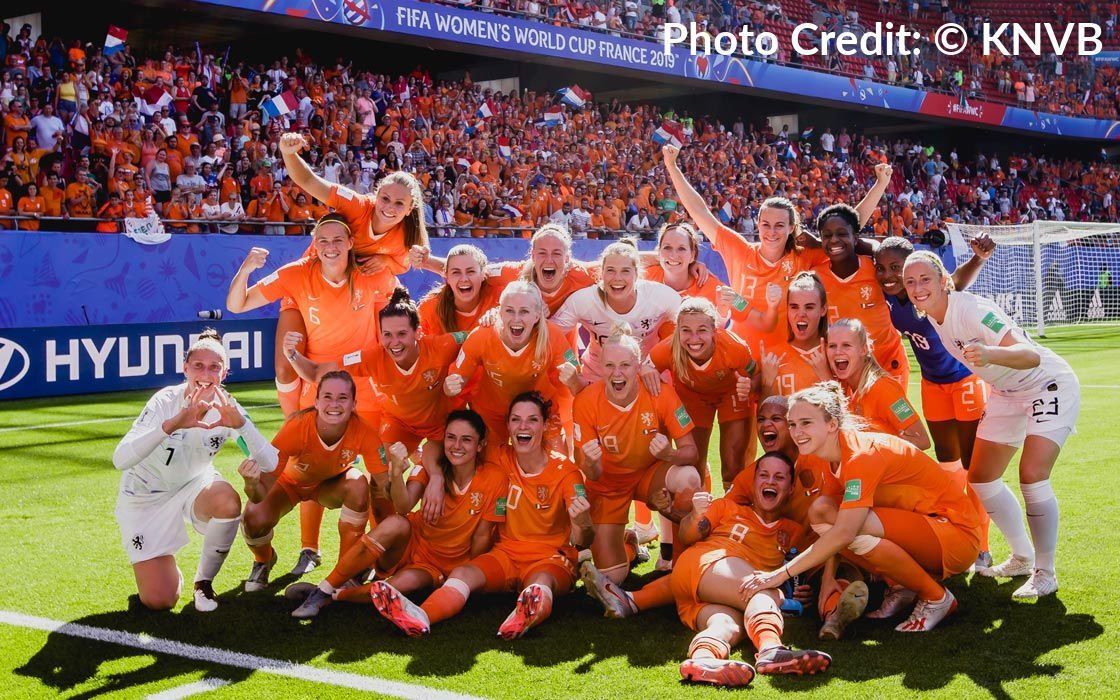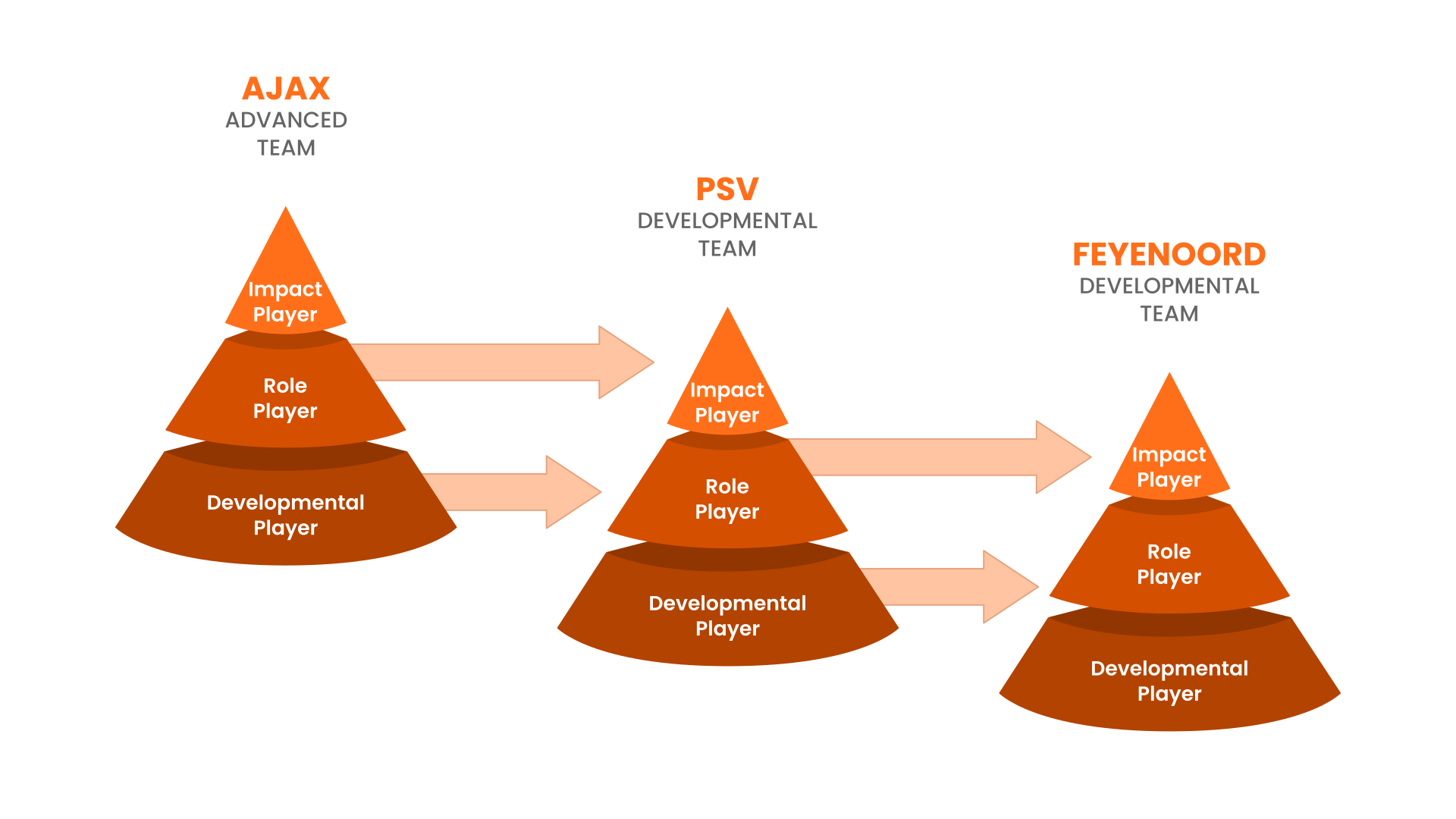Playing Time In Select Youth Soccer
Playing time in youth soccer can be a challenging balancing act for coaches and confusing for players and parents. What's fair and just? Well, the real answer is, "It depends," as many factors contribute to how much playing time a player receives. In this blog post, we will address the most important key factors, prioritize them, and attempt to bridge the gap in playing time expectations between coaches and players/parents.

U10 & Younger vs U11 & Older
For clarity purposes, this article is geared toward U11 Select teams and older. In my opinion, any age U10 & Younger, whether they be at Academy or Recreational level,all these kids should be given at least half a game to play. There might be a few minor exceptions but for the most part, these kids are so young and they all need to play. Not necessarily equally, but play nonetheless.
PLAYER/PARENT MINDSET & PERSPECTIVE
First and foremost, who determines playing time? Most would say, "The coach, of course." However, it depends on your mentality. Successful coaches aim to win, so why would they NOT play someone if it would help the team win? Here's the key point: playing time is determined by the PLAYER. It's the player's responsibility to prove to the coach, the team, and the spectators that they can contribute. This shift in mindset must be embraced by players and parents to prevent a victim mentality and excuses for lack of playing time. Blaming others and circumstances is not a path to success.
This doesn't mean coaches never make mistakes or underestimate players' abilities. Over my 20 plus years of coaching thousands of kids, I've made numerous mistakes and been proven wrong by players. So, take responsibility and prove the coach wrong by demonstrating a positive attitude, not by developing a bad one.
WINNING vs. DEVELOPMENT
Which objective holds more significance? These objectives are more interconnected than most realize. Development contributes to winning, while winning reinforces development. There are instances when they occur simultaneously and others when they unfold at different times and under varying circumstances. In general, players tend to make greater strides in their development during practices compared to games.
Each week, coaches are confronted with the challenge of balancing these two objectives. They may tilt toward one direction or the other based on a multitude of factors and circumstances, which we will explore shortly.
The crux of the matter lies in the coach's role in setting expectations and standards. Effective communication of these expectations and standards to both players and parents fosters trust in the coach's fairness and judgment.
COMMUNICATION
Assumptions, misunderstandings, and miscommunication are responsible for most (95%) conflicts between coaches and players/parents. Respectful communication is the key to resolving these conflicts. All parties involved should assume responsibility and communicate openly to address and resolve issues effectively.
6 PLAYING TIME FACTORS
There are 6 key factors that go into deciding a how much playing time a player earns.
- Attendance & Commitment
- Attitude & Mentality
- Talent & Ability
- Game Day Performance
- Playing Position
- Game Significance
- Players Attendance And Commitment at Practices & Games
1. Players Attendance And Commitment at Practices & Games
Attendance at practices & games should be a cornerstone factor in deciding playing time. If a player plays all the time and never shows up to training, what message does this send to the rest of the team? It might benefit the team in the short term but eventually, it will negatively impact the team's performance and results because the message that is sent to the team by the coach is that the standard is set to low attendance and commitment.
Simultaneously, life happens. There are more important things in life than soccer. Kids get sick, take vacations, have school commitments etc. The reasons why players miss, is really the crux of the matter and the real question to ask is “At what level of priority does soccer live in the players’ life”?
OVERCOMMITMENT
MYTH: Playing multiple sports will improve the overall athlete. I’ve heard this one many times. If you want to be an athlete, play as many sports as you wish, but if you want to be a soccer player, soccer has to be a priority from U11 and up.
The reality is that if you play multiple sports simultaneously, you can’t really be great at any of them because it’s physically impossible. To play competitively in any sport, you need to train at least twice per week if not more. So you could play 2 sports competitively at a time and be a decent play at best. The reality though, is this only gives you 1 day of rest per week. Very little time for homework and friends and free time.
As a kid growing up, I played soccer and other sports. Meaning, soccer was my priority and other sports were side sports I played by only training once per week and a game every so often. They never conflicted with soccer or if they did, soccer came first. Kids these days are overcommitted because everyone thinks more is better. They're on the Cross Country team in HS, play on the football team, and try and play competitive club soccer at a high level. That’s 2 football games during the week and a cross-country meet. That doesn’t even take into account the practices associated with each of these sports. Only then….. comes soccer. In my experience, these types of players attended less than 50% of the practices and are usually exhausted on game day. Their performances suffer and the team doesn't benefit from them being on the team.
SET EXPECTATIONS
What are the proper expectations and standards with reasonable expectations for playing competitive youth soccer?
It’s unrealistic and unfair to expect 100% attendance. However, with anything less than 75%-80% attendance at training and 90% at games, players stagnate their growth and the teams progress will not keep pace. Could you imagine attending school less than 75% of the time? How far behind would most students fall by only missing one day per week in school? A lot.
The focus is not to PUNISH a player for being over-committed or passionless, but rather to REWARD committed, passionate players with more playing opportunities. This creates an incentive loop that creates a fantastic dynamic within the team and delegates the responsibility from the coach to the player on how to prioritize soccer in their life. It reinforces
"Hard work beats talent when talent doesn't work hard." — Tim Notke
It's the player's responsibility to meet the standards and expectations. For players who lack commitment, recreational soccer, where training occurs once per week, can be a suitable alternative that aligns with their priorities.
2. Attitude, Work Ethic and Desire
WORK ETHIC & DESIRE
Attendance alone doesn't necessarily translate to commitment. True commitment stems from a desire to want to learn and improve with hard work. When players behave uninterested and indifferent they are uncommitted to the team's success. Various factors can contribute to a lack of passion and effort or a poor attitude. Coaches, players, and parents can often collaborate to address these issues and help improve a player's attitude.
ATTITUDE
However, I’ve also been in plenty of situations where a parent and player feel entitled and expect everyone else to bend over backward for their benefit without any commitment on the player to do their part and contribute to the team.
In some cases, the effort and desire is not in question but tear everyone down around them in the process because they lack leadership skills. They believe they are above the team and that the team serves them. These are attitude adjustments that need to be made and can be opportunities to develop leadership skills with the proper guidance and perspective.
3. Talent & Ability
If all is equal, attendance and attitude are within range of the standard, the most talented players should play the most. Equal playing time, often advocated within rec soccer leagues, is a non-merit-based playing environment and appropriate for equal playing time. However, in a merit-based environment such as competitive soccer, a player with talent needs to be rewarded.
Players can be categorized into 3 levels within a team.
IMPACT PLAYER
Players who can help win a game for the team, are the impact players. They clearly stand out, have a presence and get involved in the game.
ROLE PLAYERS
At the Role Player level, a player can be part of the game and play a solid role. They might not win the game but they also won’t lose the game.
DEVELOPMENTAL PLAYERS
These players have not yet demonstrated they can compete consistently at the level the team is playing at. They need time to develop their skill and physical and mental maturity.
In most instances, it's better to be a Role Player or Impact Player on a team than a Developmental Player especially when discussing playing time. Players at these levels have improved confidence because they get more opportunities to compete at a level that fits them better.
Overall, a competitive team will play their Impact Players 75-100% of the time if they meet the commitment and attitude standards. Role Players will play 50% of the time. And Developmental Players will be given opportunities when the situations allow but playing time needs to be earned in practices and in games when they get an opportunity to prove they can compete.
It can be hard for parents to accept when their son/daughter is or drops within this developmental zone. Again, communication is an important part of being fair and realistic and creating a plan to get a player into the zone of a Role Player.
Just like in school, if a student falls behind, they do extra to catch up. And if a student excels amongst their peers, they get placed in advanced classes. The difference is, the grading in school is much clearer. Evaluating which category a player belongs in the game of soccer, can be much more subjective.
PLAYER EVALUATION
Here are some bullet points on some clear aspects you can use to evaluate a player.
Impact Player
- Turnovers and Unforced Errors occur the minority of the time (<40%)
- 50/50 challenges are won the majority of the time (>60%)
- Instigates and is involved in multiple game-changing moments or big plays that help the team achieve results.
Role Player
- Turnovers and Unforced Errors occur about half the time (+-50%)
- 50/50 challenges are won half the time (+-50%)
- Involved in a few big plays as a supportive player.
Developmental Player
- Turnovers and Unforced Errors occur often (>60%)
- 50/50 challenges are won the minority of the time (<40%)
- The player is more likely to make a mistake and give up the result.
We can come up with other factors, but the ones I mentioned are very visible and can be statistically evaluated and calculated which takes the subjectiveness out of the equation.
So why even take a Developmental Player? Why not only recruit Impact Players? Well, because a Developmental Player or Role Player, playing at 20% of their potential can be more valuable in the long run than an Impact Player at 100% of their potential at the same moment in time. Some players peak early and others later. I usually don’t carry more than 1 or 2 developmental players at a time if any at all. But it can take a long time for players to break through to the next level.
4. Game Day Performance
Anyone can have a great day or a bad day. For example, an Impact Player has had excellent attendance and has been working hard with a positive attitude, but for some reason is just off their game. A Role Player is playing fantastic and is earning attention and consideration to get more playing opportunities. These types of scenarios happen all the time. It’s important to prevent labeling or boxing players to any level. Players drift between the playing levels all the time and as a player/parent, you have to accept this. As a coach, it is important to believe in your players and help them rise up to get to the next playing level by giving them opportunities to prove themselves when they have earned them.
5. Playing Position
Playing positions can trump higher-priority factors. For example, let’s say the goalkeeper is out due to sickness for 2 weeks and then returns, most likely they will still perform better than someone who has attended for 2 weeks but playing keeper is not their primary position.
There is no reward for anyone to play keeper if that’s not their primary position. It becomes a punishment for the player because they don’t get to play their preferred positions and the team gets punished with a player playing out of position.
This creates a strong incentive for a coach to have depth on the team with more options to choose from. Build a deep enough roster and develop players so they players can step in when needed. It’s hard to enforce a standard if the players know you have no choice but to play them regardless of the standards set.
6. Game Significance
Another factor that occasionally trumps higher-priority factors is a particular game is more significant than most games. In rare occasions, a game can have a much higher significance than 75% of other games. These situations can really impact the team's direction in a positive way and the usual factors might be worth overlooking for a unique game that doesn’t happen very often. It’s important that it’s managed delicately because otherwise, Trust and Fairness are lost in the expectations and standards set.
CONCLUSION
It's not where you start but how you finish. Always remember this. All kids progress differently, at different rates at different times.
At age 10, I joined my local soccer club in my hometown in Vlaardingen The Netherlands. I was late to the game at that age and I mostly played on the 2nd and 3rd team up until the age of 16 when I hit my growth spurt and matured emotionally as well. My peak playing years were within my mid-20s.
Whether you're a player, parent, or coach, we can't predict when players will reach their peak and at what level a player is capable of playing. In most cases, if a player consistently plays less than 50% of the game, they should be looking to transition to a team where they can better compete on a more consistent bases.
As a parent, I have 2 boys who I both coach. My youngest plays on the most competitive 2012 boys team in his age group and gets a lot of playing time. He checks the boxes when I evaluate him to ensure I keep an objective perspective. My oldest son (Plays on the 2008s) is very much like I was growing up and struggles to consistently get 50% playing time based on the evaluation criteria mentioned above. He’s a late bloomer and he will enjoy the game more and develop with better creativity when he's on a team with less pressure to perform. He will benefit from being an Impact Player on a less competitive team vs a Role Player or Developmental Player on a highly competitive team.
The player decides at what level they want to play at and how much time they have earned. The hope is, for the desire and passion of the player to be so strong, that it pulls them forward to playing at their maximum potential.
About the authors

Recent Posts

Dutch Football Club
Call, email or text to learn about gaining a better soccer experience.
Dallas Fort Worth Texas
Related Links
Copyright © 2023 Dutch Football Club. All rights reserved.


